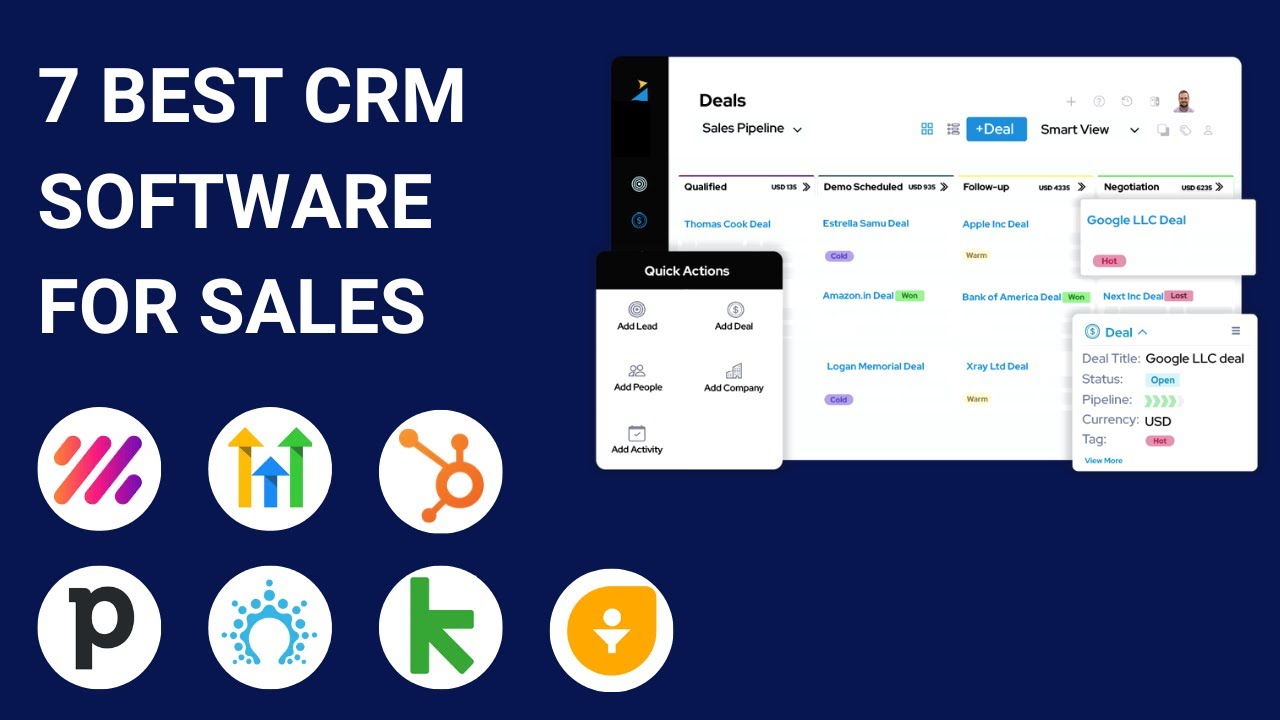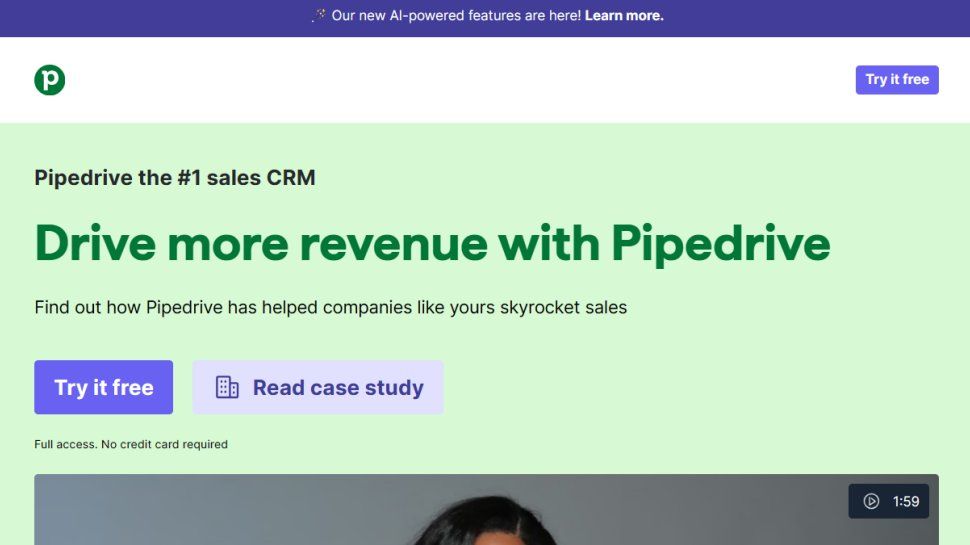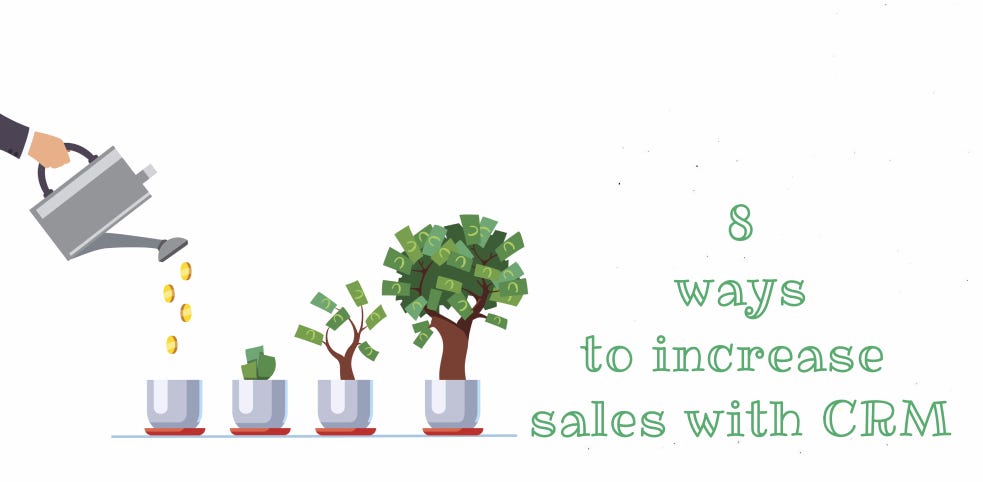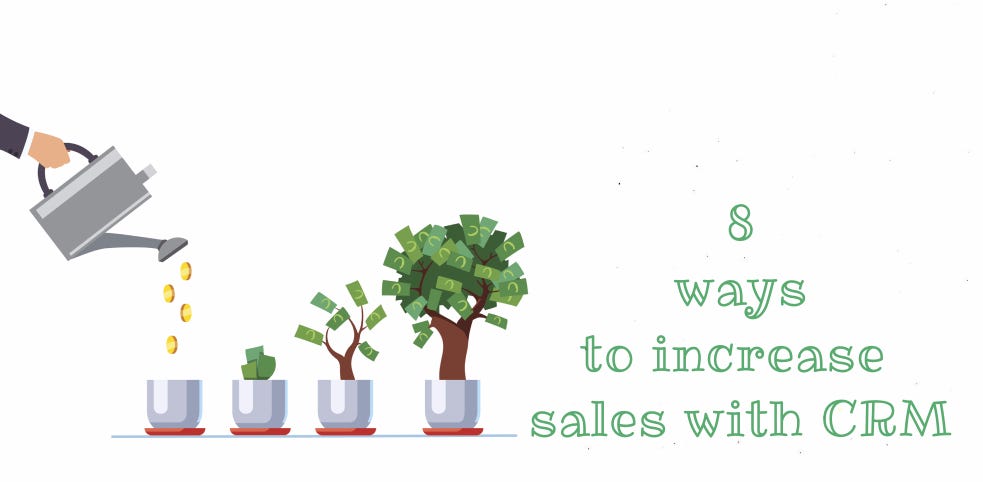Best CRM for business development is crucial for maximizing efficiency and growth. This guide explores how the right CRM system can streamline sales processes, improve customer relationships, and ultimately boost your bottom line. We’ll delve into key features, selection criteria, implementation strategies, and the vital role of integration with other business tools, all while showcasing successful case studies and addressing common concerns.
From identifying your specific business development needs and choosing the right metrics for success, to mastering opportunity tracking and leveraging data analytics for strategic decision-making, we will provide a comprehensive overview. Understanding how to select, implement, and utilize a CRM effectively is paramount for businesses aiming to achieve sustainable growth and market leadership.
Defining Business Development Needs
Effective business development hinges on a clear understanding of key performance indicators and the challenges inherent in managing sales and customer relationships. A robust strategy requires identifying critical metrics, acknowledging common hurdles, and leveraging CRM features to overcome them. This section will Artikel these crucial aspects.
Businesses often struggle to effectively manage their sales processes and customer interactions, leading to lost opportunities and decreased profitability. This is often due to a lack of visibility into the sales pipeline, inefficient communication, and inadequate customer data management.
Key Metrics for Business Development Success
Three crucial metrics provide valuable insights into the effectiveness of a business development team’s efforts. These metrics offer a quantifiable assessment of progress and highlight areas needing improvement.
- Lead Conversion Rate: This metric tracks the percentage of leads that progress through the sales pipeline and ultimately convert into paying customers. A high conversion rate indicates efficient lead nurturing and sales processes. For example, a conversion rate of 20% signifies that for every 5 leads generated, one converts into a customer.
- Customer Acquisition Cost (CAC): This metric measures the total cost incurred to acquire a new customer. A low CAC signifies efficient marketing and sales strategies. A company might aim for a CAC of $500, meaning it costs $500 to acquire each new customer.
- Customer Lifetime Value (CLTV): This metric predicts the total revenue a business expects to generate from a single customer over their entire relationship with the company. A high CLTV indicates strong customer retention and loyalty. For instance, a CLTV of $5000 means the average customer generates $5000 in revenue throughout their engagement.
Challenges in Managing Sales and Customer Relationships
Many businesses face significant challenges in effectively managing their sales and customer relationships, often leading to inefficiencies and lost revenue. Understanding these challenges is crucial for implementing appropriate solutions.
- Lack of Centralized Data: Information about customers and prospects is often scattered across different departments and systems, making it difficult to gain a comprehensive view. This leads to inconsistent communication and missed opportunities.
- Inefficient Communication: Poor communication between sales, marketing, and customer service teams can result in a fragmented customer experience, leading to dissatisfaction and churn. Lack of clear communication channels hinders effective collaboration and timely responses to customer inquiries.
- Difficulty in Tracking Progress: Without a clear system for tracking leads and sales opportunities, it’s challenging to monitor progress, identify bottlenecks, and make data-driven decisions. This lack of visibility can significantly hamper sales performance.
Addressing Business Development Obstacles with CRM Features
Customer Relationship Management (CRM) systems offer a range of features designed to address the challenges businesses face in managing sales and customer relationships. The right CRM can significantly improve efficiency and profitability.
- Centralized Database: CRMs provide a centralized repository for all customer and prospect data, eliminating data silos and ensuring everyone has access to the most up-to-date information. This facilitates better communication and collaboration.
- Improved Communication Tools: Many CRMs integrate communication tools like email, chat, and phone systems, streamlining interactions and enhancing customer service. This fosters better relationships and improves customer satisfaction.
- Sales Pipeline Management: CRMs offer tools to visualize and manage the sales pipeline, allowing businesses to track progress, identify bottlenecks, and forecast future revenue. This provides valuable insights for strategic decision-making.
- Reporting and Analytics: CRMs provide robust reporting and analytics capabilities, enabling businesses to track key metrics, identify trends, and measure the effectiveness of their sales and marketing efforts. This data-driven approach facilitates continuous improvement.
CRM Features for Business Development
Choosing the right CRM is crucial for effective business development. A well-implemented CRM system streamlines processes, improves team collaboration, and provides valuable insights for strategic decision-making. This section will delve into specific CRM features vital for business development, focusing on lead management, opportunity tracking, and the power of data analytics.
Lead Management Capabilities Comparison
Three popular CRM systems – Salesforce, HubSpot, and Zoho CRM – offer distinct lead management approaches. Salesforce, a market leader, excels in its robust automation capabilities and customization options, allowing for complex workflows and advanced lead scoring. HubSpot, known for its inbound marketing integration, provides strong tools for lead nurturing and tracking engagement across multiple channels. Zoho CRM offers a more affordable and user-friendly interface, ideal for smaller businesses, with a solid set of lead management features.
While all three manage leads through contact information, scoring, and segmentation, Salesforce offers the most advanced features for large enterprises, while HubSpot focuses on marketing automation and Zoho prioritizes ease of use and affordability. The optimal choice depends on the specific needs and scale of the business.
Opportunity Tracking and Pipeline Management
Effective opportunity tracking is fundamental to sales success. A step-by-step guide to using CRM for this purpose includes: 1) Identifying potential opportunities: Inputting new leads and their associated potential value. 2) Qualifying opportunities: Assessing the likelihood of closing a deal based on predefined criteria (e.g., budget, timeline, decision-maker). 3) Tracking progress: Recording interactions, updates, and milestones for each opportunity.
4) Forecasting revenue: Utilizing the CRM’s reporting capabilities to predict future revenue based on the pipeline’s progress. 5) Managing the sales pipeline: Visualizing the stages of each opportunity, identifying bottlenecks, and prioritizing efforts. This systematic approach allows for proactive management of the sales process, leading to improved sales performance and increased predictability.
Reporting and Analytics for Improved Strategies
CRM data provides invaluable insights for refining business development strategies. Reporting and analytics features allow businesses to track key metrics such as lead conversion rates, sales cycle length, and revenue generated by different marketing campaigns. For example, analyzing conversion rates from different lead sources can inform decisions about resource allocation. Identifying long sales cycles can highlight areas needing process improvement.
Tracking revenue by campaign helps optimize marketing spend. This data-driven approach enables informed decision-making, leading to more effective strategies and improved business outcomes. A company using CRM data might discover, for example, that their social media marketing campaign is generating high-quality leads but converting poorly, indicating a need for adjustment in the sales process following initial contact.
CRM System Selection Criteria: Best Crm For Business Development

Choosing the right CRM for your business development efforts is crucial for maximizing efficiency and achieving your sales goals. A poorly chosen system can lead to wasted resources and hinder growth, while the right one can significantly streamline processes and improve team performance. Careful consideration of several key factors is essential before committing to a particular platform.Selecting a CRM involves a multifaceted evaluation process.
This requires a systematic approach to comparing different systems based on your specific needs and budget. The following sections Artikel a structured methodology for making an informed decision.
Decision Matrix for CRM System Comparison
A decision matrix provides a clear and concise way to compare different CRM systems. This allows for a side-by-side comparison of features, pricing, and other important factors. The following table illustrates a sample decision matrix; you should tailor it to your specific requirements.
| CRM System | Pricing (Monthly/Annual) | Scalability (User Growth) | Integration Capabilities (Salesforce, Mailchimp, etc.) | Ease of Use | Customer Support | Overall Score |
|---|---|---|---|---|---|---|
| System A | $50/user/month | Excellent | Good (Salesforce, Mailchimp) | Good | Excellent | 4.5 |
| System B | $75/user/month | Good | Excellent (Salesforce, Mailchimp, Xero) | Average | Good | 4.0 |
| System C | $25/user/month | Fair | Limited | Poor | Average | 2.5 |
Note: The “Overall Score” is a subjective assessment based on your business priorities. You might weight certain factors more heavily than others. For example, a company with rapid growth might prioritize scalability over initial cost.
Essential Questions for CRM Vendors
Before making a purchase, it’s vital to engage directly with potential CRM vendors. Asking clarifying questions ensures alignment between your needs and the vendor’s capabilities.
- What specific integrations are available with other tools we currently use (e.g., marketing automation, accounting software)? This ensures seamless data flow across your business systems.
- What is your approach to data security and privacy? Data protection is paramount, especially when dealing with sensitive customer information.
- What level of customization is possible within the system? This addresses the need to tailor the CRM to your unique workflows.
- What training and support resources do you provide? Effective onboarding and ongoing support are crucial for successful CRM implementation.
- What is your pricing model, and are there any hidden fees or additional costs? Transparency in pricing avoids unexpected expenses.
Key Features to Prioritize for Business Development
Prioritizing specific features ensures the CRM effectively supports your business development strategy.
- Lead Management: A robust lead management system allows for efficient tracking, qualification, and nurturing of leads. This improves conversion rates and sales pipeline visibility. For example, features like lead scoring and automated workflows are highly beneficial.
- Contact Management: Comprehensive contact management capabilities enable detailed tracking of interactions with prospects and clients. This fosters stronger relationships and personalized communication. Detailed contact histories and segmentation capabilities are crucial.
- Sales Pipeline Management: Visualizing the sales pipeline provides a clear overview of the sales process. This allows for effective monitoring of progress and identification of potential bottlenecks. Features like customizable pipeline stages and forecasting tools are essential.
- Reporting and Analytics: Data-driven insights are critical for informed decision-making. Comprehensive reporting and analytics features allow you to track key metrics and identify areas for improvement. Customizable dashboards and reporting templates are highly beneficial.
- Integration Capabilities: Seamless integration with other business tools (marketing automation, email marketing, accounting software) ensures data consistency and efficiency. This prevents data silos and facilitates a more holistic view of the customer journey. For example, integrating with marketing automation platforms enables automated email campaigns based on lead behavior.
CRM Implementation and Training
Successful CRM implementation is more than just installing software; it’s about integrating the system into your business development workflows and empowering your team to utilize its full potential. A well-planned implementation, coupled with comprehensive training, ensures a smooth transition and maximizes return on investment. This section details the crucial steps involved in achieving this.Effective CRM implementation hinges on meticulous planning and execution.
Ignoring crucial aspects like data migration and user training can lead to system underutilization, data inconsistencies, and ultimately, a failed CRM initiative. A phased approach, with clear goals and timelines, is essential for success.
CRM Implementation Checklist
A structured approach to implementation minimizes disruptions and maximizes user adoption. The following checklist Artikels key steps:
- Project Planning and Scoping: Define project goals, identify key stakeholders, establish a timeline, and allocate resources.
- Data Migration Strategy: Develop a plan for migrating existing customer data, ensuring data accuracy and consistency. This may involve data cleansing, transformation, and validation.
- System Configuration and Customization: Configure the CRM system to match your specific business processes and workflows. This includes customizing fields, workflows, and reports.
- User Acceptance Testing (UAT): Conduct thorough testing to identify and resolve any issues before full deployment.
- Go-Live and Rollout: Implement the CRM system in a phased approach, starting with a pilot group, if applicable, before a full rollout.
- Post-Implementation Review: Evaluate the success of the implementation, identify areas for improvement, and make necessary adjustments.
Customizing a CRM System for Business Development
Customization is key to aligning the CRM with your unique business development processes. This involves tailoring the system to reflect your sales cycle, lead qualification criteria, and reporting needs. For example, a business focusing on complex sales might require customized workflows to manage multiple stages and stakeholders. A company prioritizing inbound leads might need a system that integrates seamlessly with marketing automation tools.
This customization ensures the CRM becomes an integral part of your daily operations, not just a standalone tool.
Ongoing Training and Support
Ongoing training is crucial for maintaining user proficiency and maximizing CRM effectiveness. Initial training should cover fundamental functionalities, while subsequent training should focus on advanced features and best practices. Regular refresher courses and workshops can address evolving needs and ensure the team stays up-to-date with system updates and new functionalities. Providing readily available support channels, such as a dedicated help desk or online resources, is essential for addressing user queries and resolving technical issues promptly.
Consider establishing a system of “super users” within the team to provide peer-to-peer support and mentorship. This ensures a continuous learning environment and fosters a culture of CRM adoption.
Case Studies

Successful CRM implementations significantly boost business development by streamlining processes, improving customer relationships, and ultimately driving revenue growth. Examining real-world examples provides valuable insights into effective strategies and achievable outcomes. The following case studies illustrate the transformative power of CRM in various industries.
Successful CRM Implementations in Diverse Industries
| Company | Industry | CRM System | Key Results |
|---|---|---|---|
| Salesforce | Software | Salesforce Sales Cloud (Naturally) | Improved sales forecasting accuracy, increased sales productivity, enhanced customer satisfaction leading to higher retention rates and significant revenue growth. |
| HubSpot | Marketing Software | HubSpot CRM | Streamlined marketing and sales processes, improved lead nurturing, increased conversion rates, and better customer segmentation for targeted campaigns, resulting in a substantial increase in qualified leads and closed deals. |
| Adobe | Software | Salesforce Sales Cloud | Improved sales team collaboration, enhanced lead management, increased sales efficiency, and better customer relationship management leading to improved customer lifetime value and higher revenue. |
Fictional Scenario: Securing a Major Deal with CRM
Acme Corporation, a fictional manufacturer of high-tech widgets, used its CRM system to land a multi-million dollar contract with Global Industries. The CRM played a crucial role throughout the sales process. Initially, sales representatives used the system to identify and qualify Global Industries as a high-value prospect, based on their online activity and past purchase history. Next, the CRM facilitated targeted communication, ensuring consistent messaging across various touchpoints.
During negotiations, the CRM provided real-time access to deal history, previous communications, and contact information, allowing the sales team to present a highly personalized and informed proposal. Finally, post-sale, the CRM streamlined onboarding and ongoing communication, ensuring a smooth transition and fostering a strong, long-term relationship. The successful outcome directly resulted from the seamless information flow and collaborative capabilities provided by the CRM.
CRM’s Role in Customer Retention and Long-Term Relationships
CRM systems significantly improve customer retention by providing a centralized repository of customer data, interactions, and preferences. This allows businesses to personalize communication, anticipate customer needs, and proactively address issues. For example, by tracking customer purchase history and engagement levels, businesses can identify at-risk customers and implement targeted retention strategies, such as personalized offers or proactive support. Furthermore, CRM facilitates the creation of segmented marketing campaigns, allowing businesses to deliver tailored messaging and offers to specific customer groups, enhancing engagement and loyalty.
These enhanced relationships translate directly into increased business development opportunities through referrals, repeat business, and positive word-of-mouth marketing. The resulting customer lifetime value far outweighs the initial acquisition costs.
Integration with Other Business Tools

A robust CRM system shouldn’t operate in isolation. Its true power is unlocked through seamless integration with other essential business tools, creating a unified ecosystem that enhances efficiency and provides a holistic view of customer interactions. This integration allows for streamlined workflows, improved data accuracy, and ultimately, more effective business development.Integrating your CRM with marketing automation and sales intelligence platforms offers significant advantages.
By connecting these systems, you eliminate data silos, automate repetitive tasks, and gain deeper insights into your customer base, leading to more targeted campaigns and improved sales performance. This interconnected approach fosters a more efficient and data-driven business development strategy.
Benefits of CRM Integration with Marketing Automation and Sales Intelligence, Best crm for business development
Marketing automation platforms, when integrated with a CRM, enable personalized and targeted marketing campaigns. For instance, CRM data on customer preferences and purchase history can be used to segment audiences and deliver tailored email sequences or social media ads. Sales intelligence tools, on the other hand, provide valuable insights into prospects, such as their company size, industry, and recent activities, allowing sales teams to prioritize leads and personalize their outreach.
The combination of these systems provides a powerful engine for lead generation and nurturing.
Streamlining Workflows and Improving Data Accuracy through CRM Integration
Data silos lead to inconsistencies and inaccuracies, hindering effective decision-making. Integrating CRM with other platforms eliminates this problem by centralizing data. For example, when a lead converts from a marketing campaign (tracked in the marketing automation platform) to a sales opportunity (in the CRM), the information is automatically transferred, ensuring consistent and up-to-date data across all systems. This automated data flow minimizes manual data entry, reducing errors and saving valuable time.
Furthermore, real-time updates across platforms ensure everyone involved has access to the most current information.
Hypothetical Workflow: Data Flow Between CRM, Marketing Automation, and Sales Intelligence
Imagine a scenario where a lead, identified through a sales intelligence platform as a high-potential prospect within a target industry, is added to a marketing automation platform. This platform then triggers a series of automated email nurturing campaigns based on the lead’s profile and engagement. Once the lead shows significant interest (e.g., by clicking links, downloading content, or attending a webinar), their information is automatically transferred to the CRM.
The sales team then receives a notification, allowing them to engage with the qualified lead in a timely and personalized manner. Throughout the sales process, updates and interactions are recorded in the CRM, providing a comprehensive history of the lead’s journey. The CRM, in turn, can feed back data to the marketing automation platform to optimize future campaigns based on lead conversion rates and sales performance.
This closed-loop system ensures continuous improvement and optimization of business development strategies.
Measuring ROI of CRM in Business Development

Implementing a CRM system represents a significant investment. Therefore, demonstrating its value and justifying the expenditure requires meticulous tracking and analysis of its impact on business development efforts. A robust ROI calculation ensures that the investment in the CRM system translates into tangible, measurable improvements in key business metrics.Measuring the return on investment (ROI) of a CRM system in business development involves a multi-faceted approach that goes beyond simply tracking software usage.
It necessitates linking CRM data to concrete business outcomes. This requires a well-defined strategy for data collection and analysis, focusing on key performance indicators (KPIs) that directly reflect the impact of the CRM on business development activities.
Key Performance Indicators (KPIs) for CRM ROI Measurement
Effective CRM ROI measurement relies on tracking specific KPIs. These metrics provide quantifiable data that demonstrate the system’s contribution to business growth. By monitoring these indicators, businesses can assess the effectiveness of their CRM strategy and make data-driven adjustments.
- Lead Conversion Rate: This KPI measures the percentage of leads generated that convert into paying customers. A CRM system facilitates lead nurturing and management, directly impacting this rate. An increase in the conversion rate signifies improved lead qualification and follow-up, demonstrating the CRM’s effectiveness.
- Sales Cycle Length: CRM systems streamline sales processes, often resulting in a shorter sales cycle. Tracking the time it takes to close deals, both before and after CRM implementation, provides a clear indication of efficiency gains.
- Customer Acquisition Cost (CAC): By optimizing lead management and sales processes, a CRM can contribute to a lower CAC. Tracking this metric reveals the cost-effectiveness of acquiring new customers with the CRM’s assistance.
- Customer Lifetime Value (CLTV): A CRM facilitates better customer relationship management, potentially increasing customer retention and repeat purchases. Tracking CLTV demonstrates the long-term value generated by improved customer engagement.
- Sales Revenue Growth: Ultimately, the most important KPI is the direct impact on revenue. Comparing sales figures before and after CRM implementation, while controlling for other factors, provides a clear measure of the system’s contribution to revenue growth.
Calculating CRM ROI
Calculating the ROI of a CRM system involves comparing the net benefits derived from its implementation against the total investment cost. This calculation provides a quantifiable measure of the system’s return on investment.
ROI = (Net Benefits – Total Investment Cost) / Total Investment Cost
For example, if the total investment cost (including software licenses, implementation, and training) was $10,000 and the net benefits (increased revenue minus additional operational costs) were $20,000 over a year, the ROI would be:
ROI = ($20,000 – $10,000) / $10,000 = 1.0 or 100%
This indicates that the CRM generated a 100% return on the initial investment within the first year.
Reports Demonstrating CRM Value
CRM systems provide extensive reporting capabilities, allowing businesses to visualize and analyze data to showcase the system’s impact. These reports offer compelling evidence of the CRM’s value.
- Lead Source Performance Report: This report identifies the most effective lead generation channels, allowing for resource allocation optimization and improved marketing ROI.
- Sales Performance Report by Sales Rep: This report tracks individual sales representative performance, highlighting areas of strength and weakness and enabling targeted coaching and training.
- Customer Churn Report: This report analyzes customer attrition rates, providing insights into reasons for churn and allowing for proactive interventions to improve customer retention.
- Revenue Growth Report: A comprehensive report showing revenue trends before and after CRM implementation, directly demonstrating the system’s impact on sales growth.
End of Discussion
Implementing the best CRM for your business development needs represents a significant investment, but the potential return is substantial. By carefully considering the factors discussed – from feature selection and integration to ROI measurement and ongoing training – businesses can significantly enhance their sales processes, improve customer relationships, and achieve a measurable increase in revenue and market share. The key is to choose a system that aligns with your specific requirements and commit to its effective implementation and ongoing optimization.
FAQ Corner
What is the average cost of a CRM system?
CRM costs vary widely depending on features, scalability, and the number of users. Expect a range from free options with limited functionality to thousands of dollars per month for enterprise-level solutions.
How long does it take to implement a CRM?
Implementation timelines depend on the complexity of the system and the size of your business. Smaller businesses might see results within weeks, while larger enterprises could take months.
What are the risks of not using a CRM?
Risks include lost leads, inefficient sales processes, poor customer relationship management, difficulty tracking progress, and a lack of data-driven insights for strategic decision-making.
How can I measure the success of my CRM implementation?
Track key performance indicators (KPIs) such as lead conversion rates, sales cycle length, customer satisfaction, and return on investment (ROI). Regularly analyze CRM data to assess performance and make necessary adjustments.

